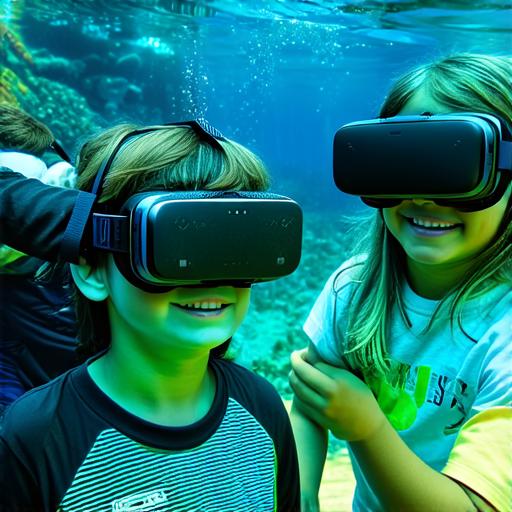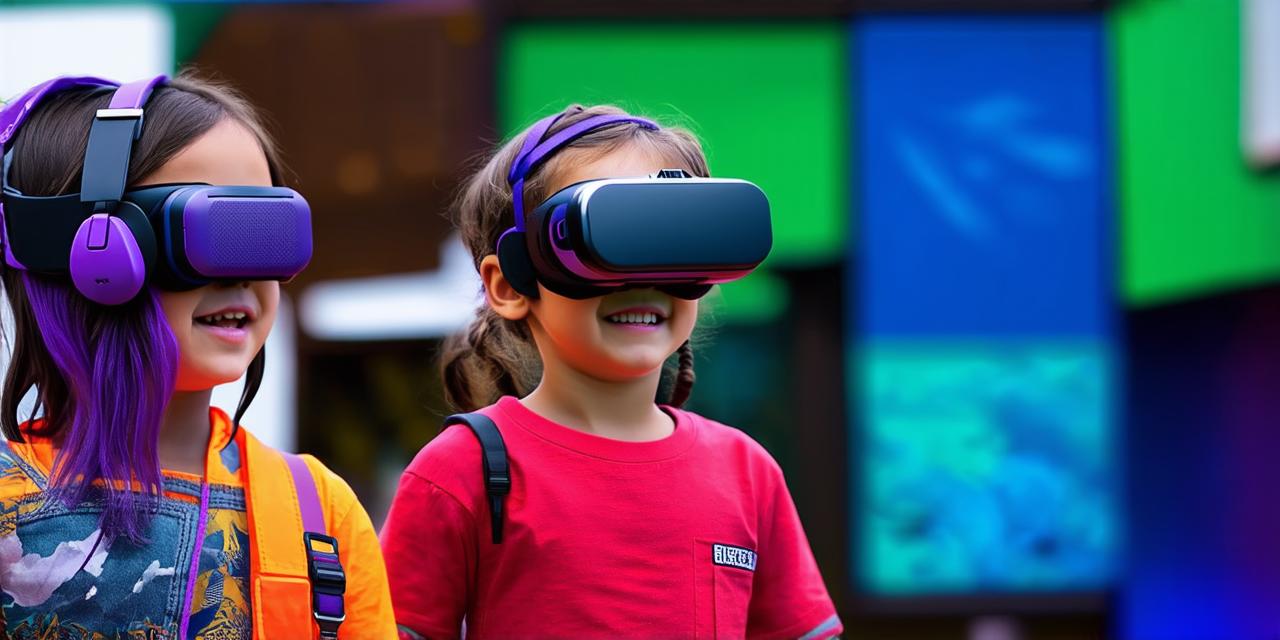Virtual Reality technology has been around for several years now, and its popularity is on the rise, especially among children. With this newfound technology, there have been concerns about its potential effects on children’s health and development. Some studies have raised concerns about the safety of virtual reality for kids, while others suggest that it can be a valuable tool for learning and entertainment. So, is virtual reality safe for children?
The answer to this question is not clear-cut. On the one hand, research has shown that virtual reality can be a fun and engaging way to learn about different subjects, such as science and history. It can also provide kids with a unique opportunity to explore new environments and experiences that might not be possible in real life.
For example, virtual reality can be used to simulate a trip to outer space or to take a virtual tour of historical landmarks without leaving the classroom. This technology can also be used for therapy purposes, such as treating anxiety disorders or PTSD.
However, there are also potential risks associated with virtual reality for children. For example, prolonged exposure to virtual environments can cause motion sickness and eye strain, which could lead to physical discomfort and headaches. In some cases, virtual reality can also trigger anxiety and fear responses, especially if the content is violent or graphic.
One of the biggest concerns about virtual reality for children is that it can be addictive. If kids spend too much time in virtual environments, they may neglect their real-world responsibilities and relationships, leading to social isolation and other negative outcomes.
Despite these potential risks, many experts believe that virtual reality can be a safe and effective tool for children, as long as it is used responsibly. To ensure that your child is getting the most out of virtual reality while minimizing its potential risks, here are some tips to keep in mind:
- Limit exposure to virtual environments: While virtual reality can be a fun and engaging way to learn and explore, it’s important not to overdo it. Set limits on how much time your child spends in virtual environments each day, and encourage them to take breaks to stretch their legs and get some fresh air.
- Choose age-appropriate content: Not all virtual reality experiences are suitable for children. Make sure that the content your child is accessing is appropriate for their age and developmental level. Avoid violent or graphic content, and look for games and activities that promote positive values and behaviors.
- Monitor your child’s behavior: Keep an eye on your child while they are using virtual reality, especially if they are younger. If you notice any negative behaviors or reactions, intervene immediately and talk to them about what they are experiencing.
- Encourage physical activity: Virtual reality can be a great way to get kids active and moving, but it’s important not to rely on it as their only form of exercise. Encourage your child to engage in other forms of physical activity, such as sports or outdoor games, to ensure that they are getting enough exercise and developing strong muscles and bones.
- Talk to other parents: If you are concerned about the safety of virtual reality for children, talk to other parents who have experience with the technology. They may have valuable insights and advice to share based on their own experiences with virtual reality and their children.

In conclusion, while virtual reality can be a fun and engaging way to learn and explore for children, it’s important to use it responsibly to minimize its potential risks. By setting limits, choosing age-appropriate content, monitoring your child’s behavior, encouraging physical activity, and talking to other parents, you can help ensure that your child gets the most out of virtual reality while staying safe and healthy. It’s also essential to keep in mind that virtual reality should not replace real-world experiences and interactions, as these are crucial for children’s social and emotional development.
